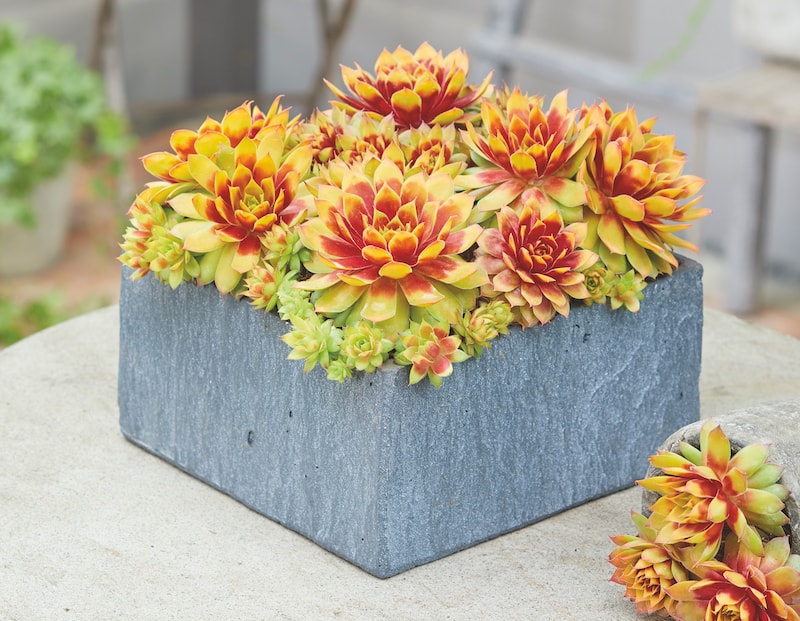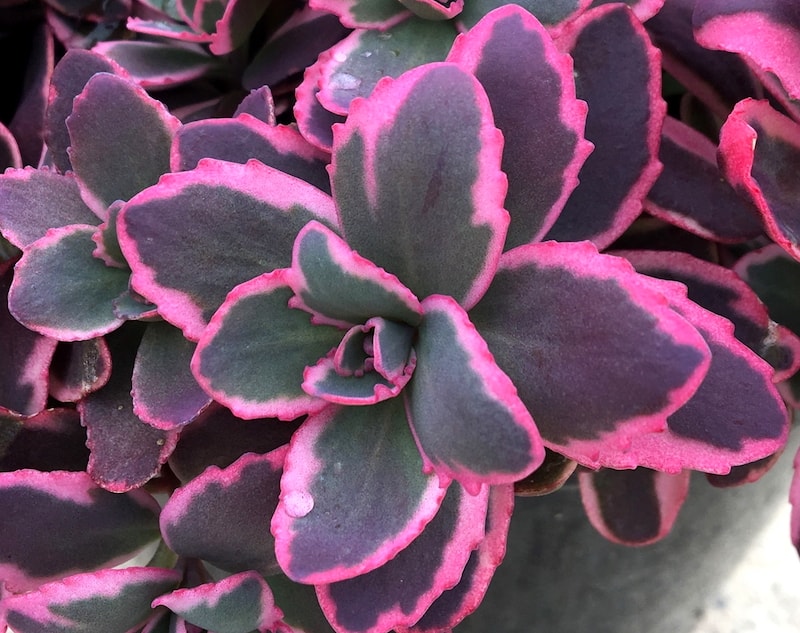Alpines are tough, low-growing, and hardy plants that thrive at high altitude on exposed mountainsides in the wild. These drought-tolerant plants prefer dry soil with good drainage, making them ideal for low-maintenance gardens. If you don’t have suitable conditions in your beds and borders, why not enjoy these popular little plants in a container display? Here are some of our favourite, award-winning varieties along with planting tips to show them off to best advantage.
What type of soil do alpine plants like?
Alpine plants like a very free-draining potting mix with a neutral pH. Make the perfect blend by mixing equal amounts of sharp sand and multipurpose compost. Add a layer of pebbles to the bottom of your container to help with drainage.
What’s the best container for alpine plants?

Image: Peter Turner Photography/Shutterstock
Choose a container with lots of drainage holes or use a drill to add some more. You never want your soil to become waterlogged.
Shallow containers work well for the root systems and compact growth habit of most alpine plants. Go for a heavy-bottomed trough if you want to move your display around the garden, as it’s less likely to blow over in high winds. Upcycled containers like old Belfast sinks make excellent planters. Just make sure you tilt the sink slightly towards the plug hole to aid drainage.
To enjoy your display in all its glory, position smaller containers on a patio table or wall so you can appreciate the delicate flowers and foliage up close.
The best alpine plants for container growing

Image: Sempervivum Chick Charms® Gold Nugget from Suttons
Alpines look really effective when block-planted en masse. Alternatively, fill your container with a bright mix of foliage colours and forms. Here are just some of our favourite alpines to try:
- Sempervivum Chick Charms® Gold Nugget. An excellent, compact succulent, the leaves transition from lime green in the summer to fiery orange in the autumn.
- Sedum ‘Little Urchins’. This lovely mix of leaf shapes and colours range from 8cm to 20cm in height. Enjoy the flowers from March to June.
- Phlox subulata ‘Pharao Blue Eye’. This is a superb drought-tolerant, creeping perennial that produces a mat of striking white flowers with blue eyes.
- Sedum Atlantis. A Chelsea Flower Show winner for a reason, this eye-catching plant with lime green and cream variegated foliage flowers from July to September.
- Lithodora ‘Heavenly Blue’. This spreading evergreen perennial forms a carpet of little green leaves. Tiny deep blue flowers appear from April to September.
- Armeria ‘Ballerina White’. A good choice for smaller containers, erect stems culminating in white flower balls emerge from clumps of short leaves.
- Lewisia cotyledon ‘Elise Mixed’. Winner of a Fleuroselect gold medal, this repeat flowering variety boasts masses of starry flowers in a range of fruity colours including stripes and picotees. Slender flower stems rise from neat rosettes of fleshy leaves.
- Dianthus ‘Vivid Bright Light’. Featuring lovely, compact, grey-green foliage, this plant brings your garden to life from April to October with a burst of electric-pink, scented blooms.
How to plant an alpine container

Image: Sedum ‘Sunsparkler Dream Dazzler’ from Suttons
Here’s what you need to plant up your alpine container:
- Multi-purpose compost. Use a peat free option if you can.
- Horticultural grit or sharp sand. Mix with your compost to improve drainage.
- Large shallow trough. Go for a trough with a large number of drainage holes. Imitation rock and stone containers look good with alpine plants.
- Large tray. Use the tray to mix your compost and grit.
- Ornamental gravel. Use this to decorate the top of your container. It improves drainage and suppresses weed growth.
- Ornamental rocks. Arrange these around your succulents for an interesting textural contrast.
Make sure you mix your compost and grit when they’re dry, before adding to the container. Then take some time to lay out your plants and plan where you want everything to go. Start by setting spreading plants around the edge so they can trail over the sides, and work your way in. Finally, use the ornamental rocks and gravel to cover the surface of the soil.
Display your freshly planted alpine containers in a sunny spot, keeping them in a rain shadow if possible. Your plants will appreciate sporadic watering through the warmer months, but keep an eye on soil moisture levels to avoid waterlogging.
Do share pictures of your finished alpine container with us via social media, we’d love to see the plants you choose and how you display them in the garden!
Lead image: Sedum Atlantis from Suttons
Copyright: Plantipp / Visions BV, Netherlands
Last Updated on November 8, 2024 by Suttons Horticultural Team





